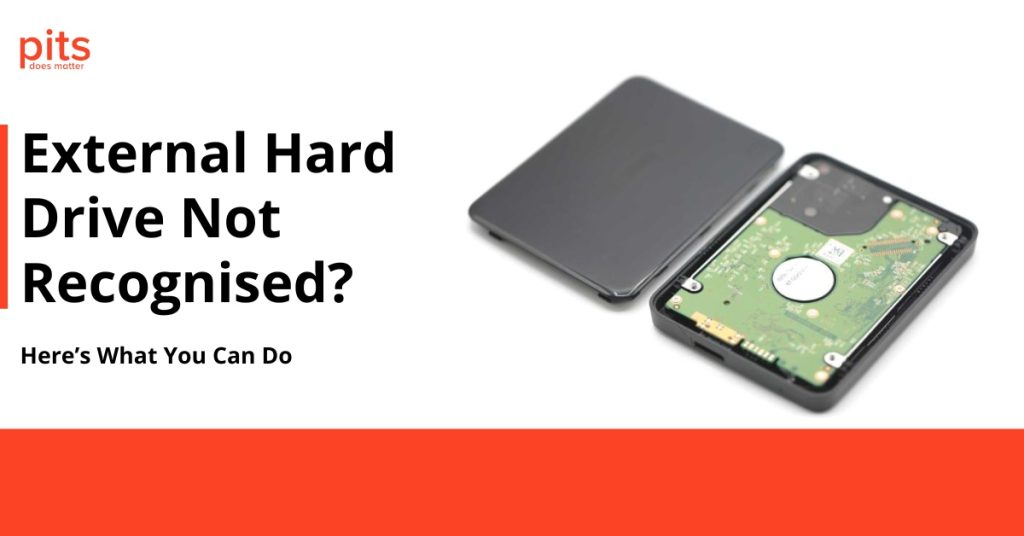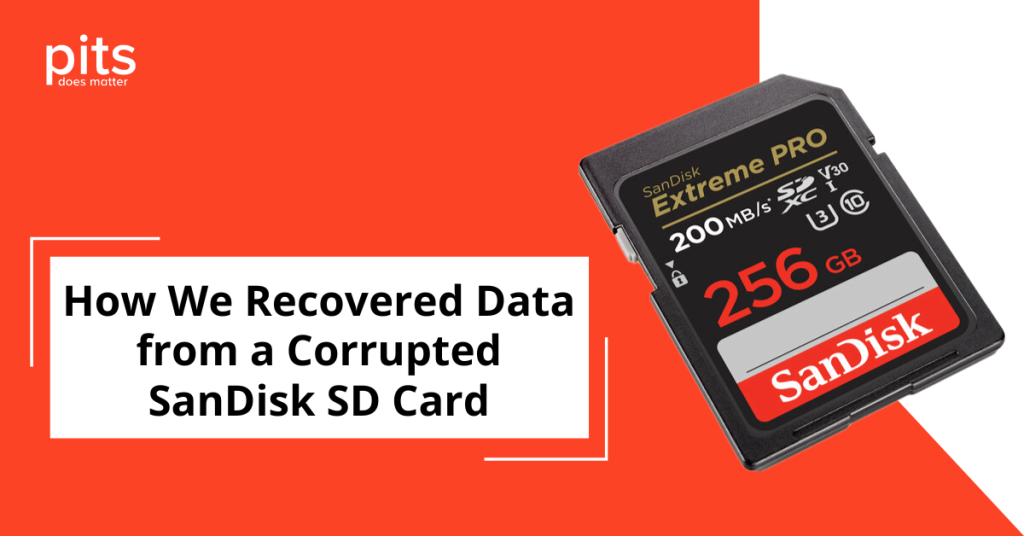Are you experiencing difficulty with your SSD not showing up in disk management? When you notice your SSD drive not showing up in Disk Management, you must first check the physical connections. Ensure your SSD is well connected to the motherboard and the power cables are securely attached. A loose connection or faulty cable could be causing the problem. If everything seems properly connected, try restarting your computer to refresh the system and detect the SSD.
Understanding the Causes of SSD Not Showing
If your SSD is properly connected but still not showing up in disk management, there could be several other reasons behind this issue. Some common causes include:
Driver Issues
The SSD might not be recognised due to outdated or corrupted drivers. Ensuring that your system’s storage controller drivers are current is crucial.
Partition Issues
If the SSD is new and has yet to be formatted or partitioned, it will show up in Disk Management once this process is completed.
Failed SSD
In rare cases, the SSD itself might be defective or have failed, preventing it from being recognised by the system.
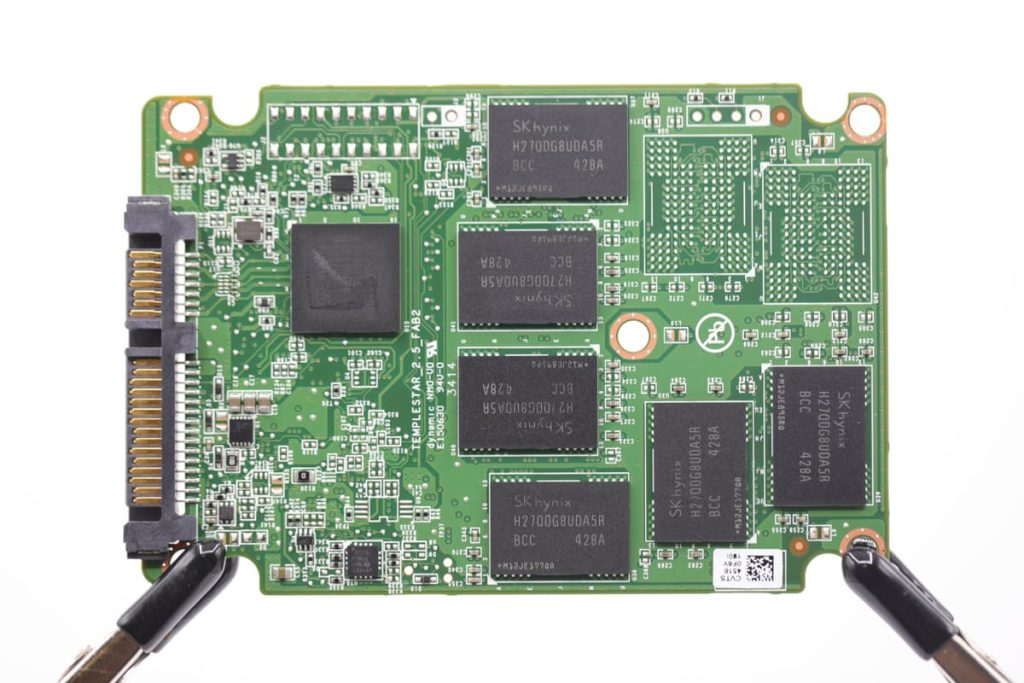
BIOS Settings
Sometimes, the SSD might not show up because it’s not enabled in your computer’s BIOS or UEFI settings. Checking and adjusting these settings can resolve the issue.
Compatibility Issues
The SSD might not be compatible with the motherboard or operating system, especially if it’s older.
New SSD Not Showing in Disk Management
When a new SSD is not showing up in Disk Management, it’s often due to it requiring initialisation. Unlike traditional hard drives, SSDs must be initialised for the first time before use. This process establishes a storage management scheme, such as a Master Boot Record (MBR) or GUID Partition Table (GPT), which allows the operating system to read and write data to the drive.
Failure to initialise the SSD will result in it not appearing in Disk Management, rendering it invisible to the system despite being physically connected and powered on. To correct this, accessing the Disk Management tool and manually initiating the SSD typically solves the problem, enabling it to be formatted and utilised for storage.
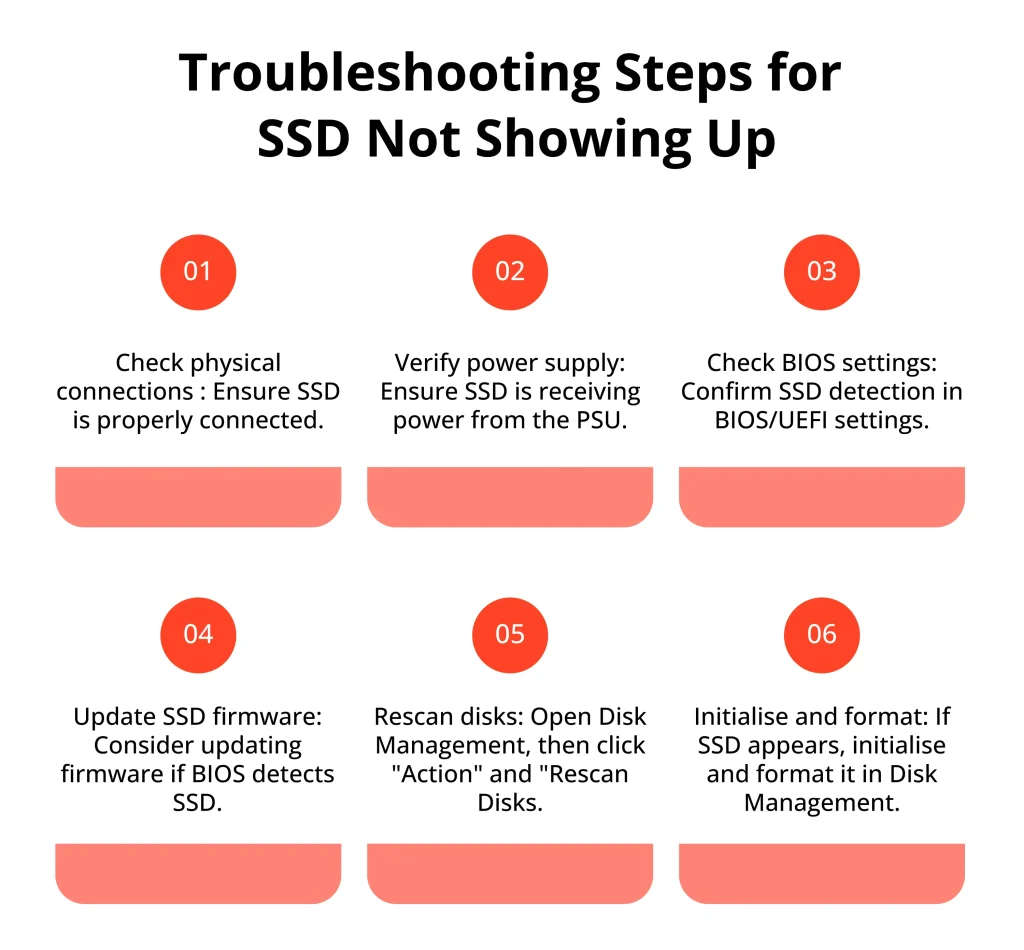
Troubleshooting Steps for SSD Not Showing Up
If your M.2 Drive is not showing up in Windows, check its connection and compatibility with your motherboard. Before moving on to troubleshooting, ensure these are in order. To address the problem of your SSD not showing up in disk management, consider the following steps:
SSD Not Showing up in Windows Disk Management
If none of the above steps work, there are a few more advanced troubleshooting options to fix your SSD not showing up in disk management. These include:
This solution effectively addresses the issue of both internal and external SSDs not appearing in Disk Management. If your SSD isn’t appearing in Disk Management, it may signal a problem with the SSD driver.
How to Recover Data from SSD Not Detected
If you’ve tried all the above solutions and your SSD is still not showing up in disk management, it could indicate a more serious problem with the drive. While there are many software tools and DIY solutions, being cautious is crucial. Using untested methods or unreliable software could worsen the problem, putting your SSD’s integrity and stored data at risk.
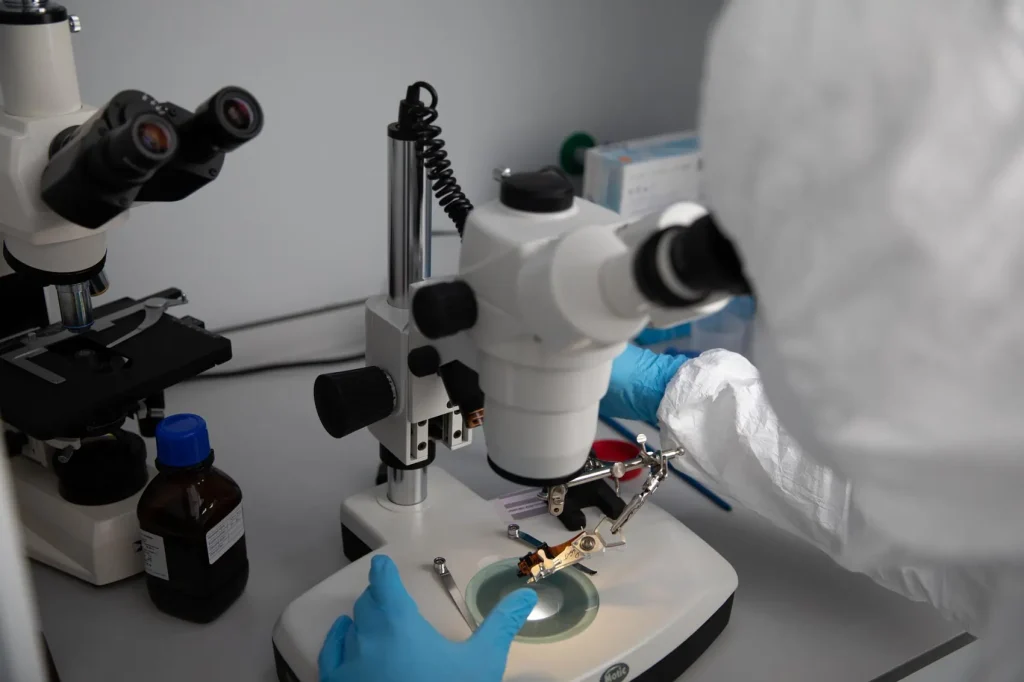
Given the complexity and the potential for additional damage, it is advisable to seek professional service when attempting to recover data from an SSD not detected by Disk Management.
Professionals in data recovery have the tools, knowledge, and experience to handle various scenarios without risking further damage to the SSD or loss of data.
PITS Global Data Recovery Services offers unparalleled support and expertise in retrieving data from all types of storage media, including SSDs. That’s why our team is dedicated to providing fast, reliable, and secure SSD data recovery services.
If you’re experiencing issues with your SSD and need expert assistance, don’t hesitate to contact PITS Global Data Recovery Services. Our team is ready to provide a free consultation and guide you through recovery. Reach out to us by phone or through our website to get started on recovering your valuable data safely and efficiently.
FAQ about SSD Not Showing Up in Disk Management
Why is my SSD not showing up in Disk Management?
Several reasons your SSD might not appear in Disk Management include issues with the SSD’s connection, compatibility, initialisation status, BIOS settings, outdated drivers, or possible hardware malfunctions.
Can BIOS settings affect the detection of my SSD?
Yes, BIOS settings can significantly influence whether the system detects your SSD. Ensure the BIOS is configured to detect new hardware and updated to the latest version for optimal compatibility.
What should I do if my SSD is detected in BIOS but not Disk Management?
If your SSD is recognised in BIOS but not Disk Management, try checking the drive’s connection, updating your storage controller drivers, changing the SATA port (if applicable), or using the Rescan Disks option in Disk Management.
Is it safe to use third-party disk management tools to detect my SSD?
While third-party disk management tools can be useful, selecting reputable software is crucial to avoid potential damage to your system. In most cases, trying unverified third-party disk management tools or unproven DIY methods is not recommended, as these could inadvertently damage your system or data. Using only trusted and proven solutions is essential to ensure the issue is manageable.
What steps can I take if I need help with the troubleshooting methods?
If none of the standard troubleshooting steps bring your SSD to show up in Disk Management, it may indicate a hardware failure. Consider hiring a professional data recovery service for expert help and to prevent data loss.

